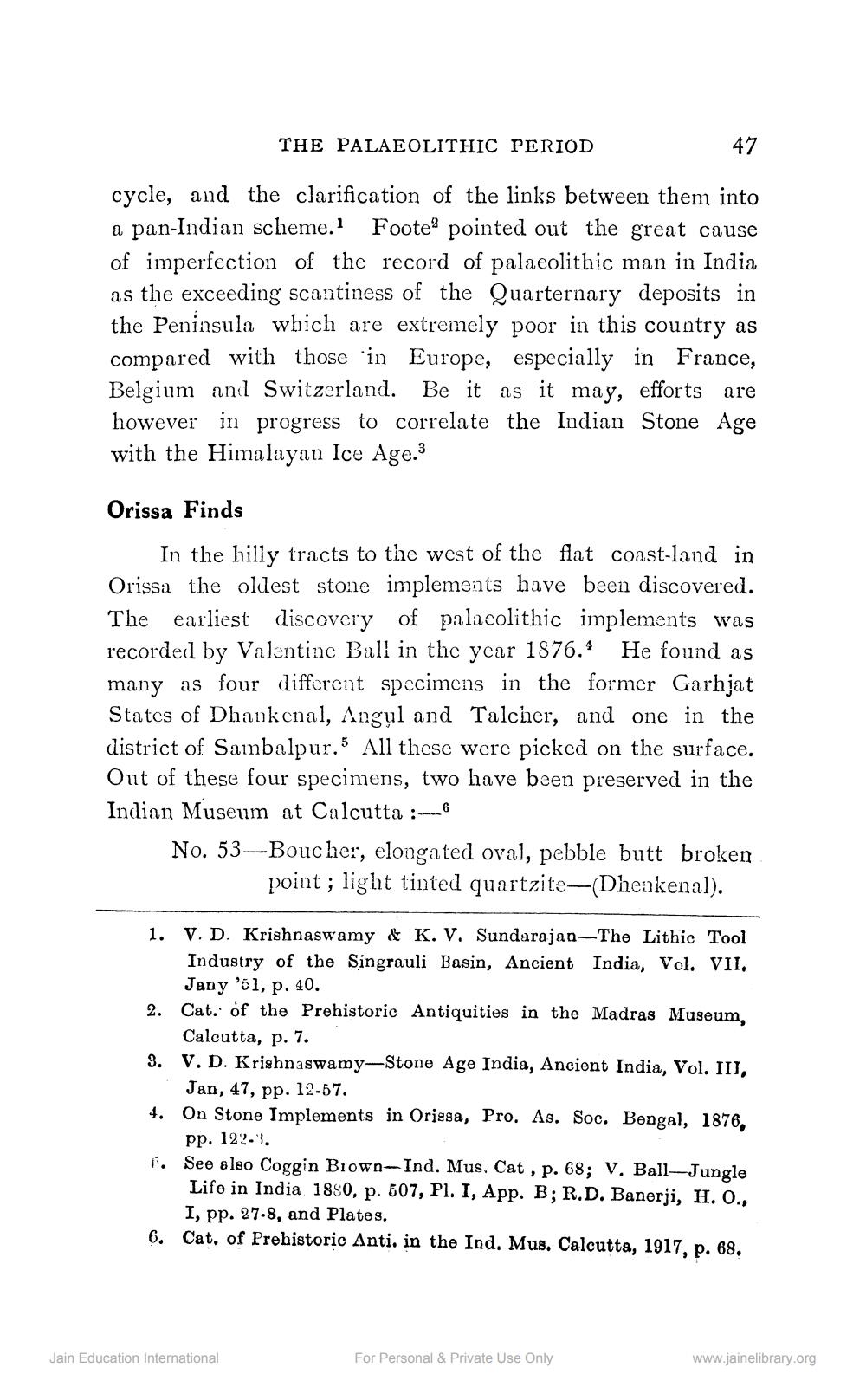________________
THE PALAEOLITHIC PERIOD
47
cycle, and the clarification of the links between them into a pan-Indian scheme. Foote” pointed out the great cause of imperfection of the record of palacolithic man in India as the exceeding scantiness of the Quarternary deposits in the Peninsula which are extremely poor in this country as compared with those in Europe, especially in France, Belgium and Switzerland. Be it as it may, efforts are however in progress to correlate the Indian Stone Age with the Himalayan Ice Age.3
Orissa Finds
In the hilly tracts to the west of the flat coast-land in Orissa the oldest stone implements have been discovered. The earliest discovery of palaeolithic implements was recorded by Valentine Ball in the year 1876. He found as many as four different specimens in the former Garhjat States of Dhankenal, Angul and Talcher, and one in the district of Sambalpur.5 All these were picked on the surface. Out of these four specimens, two have been preserved in the Indian Museum at Calcutta :-6 No. 53-Boucher, elongated oval, pebble butt broken
point; light tinted quartzite-(Dhenkenal).
1. V. D. Krishnaswamy & K. V. Sundarajan—The Lithic Tool
Industry of the Singrauli Basin, Ancient India, Vol. VII,
Jany '51, p. 40. 2. Cat. of the Prehistoric Antiquities in the Madras Museum,
Calcutta, p. 7. 3. V. D. Krishnaswamy-Stone Age India, Ancient India, Vol. III,
Jan, 47, pp. 12-57. 4. On Stone Implements in Orissa, Pro. As. Soc. Bengal, 1876,
pp. 122.3. . See also Coggin Biown-Ind. Mus, Cat , p. 68; V. Ball-Jungle
Life in India 1880, p. 507, Pl. I, App. B; R.D. Banerji, H.O.,
I, pp. 27.8, and Plates. 6. Cat, of Prehistoric Anti. in the Ind. Mus. Calcutta, 1917, p. 68.
Jain Education International
For Personal & Private Use Only
www.jainelibrary.org




